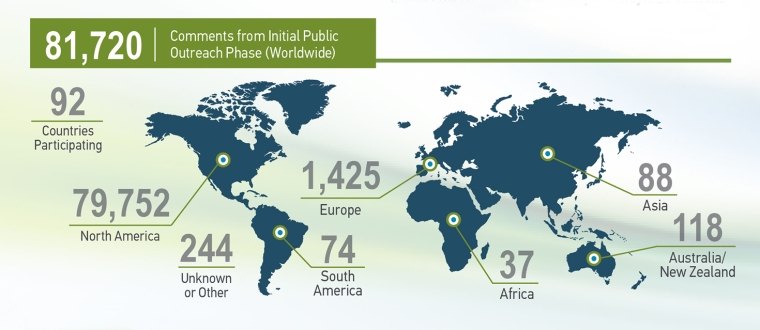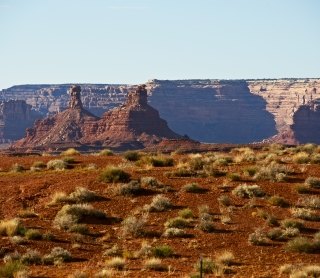A surge in uranium prices in the late 2000s led to a huge influx of new mining claims on Bureau of Land Management (BLM) and Forest Service-administered public lands in the vicinity of Grand Canyon National Park. That influx in turn led to concerns about mining harming the Colorado River and threatening air quality, wildlife, Native American and other archaeological resources, and recreational uses of these lands.
In 2009, government officials realized that not enough empirical data existed to determine whether perceived threats to the environment as a result of new mining were “real” or merely speculative. That summer, a two-year segregation, or “time-out,” was put in place on new mining activity on more than 1 million acres of public lands in Arizona.
This pause was intended to give time for five federal agencies – the Bureau of Land Management (BLM), Forest Service, National Park Service, Fish and Wildlife Service, and U.S. Geological Survey – to conduct the scientific studies necessary to determine whether a longer halt to new mining in the area was warranted. In accordance with the National Environmental Policy Act (NEPA), the multi-agency effort led by the BLM would include participation by the public, tribes, environmental groups, industry, state and local government, and other stakeholders.
SWCA assisted the BLM in completing the required environmental impact statement (EIS) that would provide the basis for an ultimate decision by the then-Secretary of the Interior, Ken Salazar. SWCA immediately recognized that this project presented unique and potentially daunting challenges. The legal authority under which the Secretary ordered the segregation allowed a maximum of only 24 months to complete the EIS process — far less time than an EIS typically requires. Further, the project area was both massive and complex. The very geological and hydrologic forces that had shaped the Grand Canyon and surrounding landscapes over many millions of years greatly complicated the scientific analysis.
To meet these various challenges, SWCA quickly mobilized staff from our Phoenix, Tucson, Flagstaff, Las Vegas, and Salt Lake City offices.
Locating the Uranium
Perhaps the greatest challenge to the EIS analysis, however, was the fact that no one knew exactly where economically viable uranium deposits existed. While one breccia pipe uranium mine, the “Arizona 1” mine, was already operating in the vicinity of the Grand Canyon, and three others had previously been approved but weren’t being mined, the potential for future uranium mining in the area was not known.
Many thousands of mining claims had been staked throughout the area as uranium prices spiked by late 2007. Based on historical records, less than 1 percent of breccia pipe uranium mining claims typically ever develop into viable mining operations. The question of precisely where within the project area new uranium deposits might exist — and, therefore, of where environmental impacts could potentially occur — would remain unanswered for the duration of the analysis.
Early in the project, SWCA experts met with managers and resource specialists at the BLM, Forest Service, and other agencies in an effort to develop a management strategy and a scientific rationale for analyzing potential environmental impacts despite the unknowns. What gradually emerged was a carefully researched “Reasonably Foreseeable Development Scenario” that projected how uranium mining in the project area could develop over the next few decades if no withdrawal were imposed. This “RFD Scenario” was based on existing and recently updated U.S. Geological Survey data, on interviews with industry representatives and uranium mining experts in northern Arizona, and on projections of how fluctuating market prices could affect future development in the area. The RFD Scenario formed the basis for all impact analysis contained in the EIS that was to follow.
Additional Challenges
There were two other major challenges to project completion. Due to its proximity to the Grand Canyon, the proposed withdrawal had attracted enormous public and media attention, both within the United States and overseas. The initial scoping process, which took place prior to the release of the draft EIS, garnered more than 81,000 comment submittals from 92 countries — reflecting the regard many feel for the importance of the Grand Canyon as a heritage resource for the entire world.

More extraordinary still was the response to the release of the public Draft EIS, which generated more than 297,000 comment submittals, each of which had to be carefully reviewed and catalogued for consideration in the Final EIS. Of even greater consequence to project team members was the knowledge that the EIS was almost certain to end up in federal court — either from uranium mining companies who stood to lose potentially billions of dollars in revenue if a full withdrawal occurred, or from Native American tribes and environmental groups if a limited or no withdrawal occurred. Both sides had made their positions known very early in the process.
To meet these various challenges, SWCA quickly mobilized staff from our Phoenix, Tucson, Flagstaff, Las Vegas, and Salt Lake City offices, including highly experienced NEPA experts, geologists, hydrologists, biologists, and many other specialists in their fields. To further bolster the defensibility of our analysis, we supplemented our staff with specialists from Errol L. Montgomery and Associates, whose knowledge of the geomorphology and hydrology of the Grand Canyon and surrounding areas is well-known and highly regarded. Air quality analysis was conducted by experts in that field from the Phoenix-based firm of Ninyo & Moore, and assessment of the potential economic and social impacts of any mining withdrawal was conducted by Denver-based BBC Consulting.
Exactly one day before the expiration of the 24-month segregation period, SWCA delivered to the BLM the Northern Arizona Proposed Withdrawal Final Environmental Impact Statement. A Record of Decision was issued in January 2012 ordering a 20-year withdrawal from all hard-rock mineral exploration and mining within the project area described in the SWCA-authored EIS.
Enter the Legal Challenges
As expected, a series of lawsuits followed soon after. The plaintiffs in the cases that were filed in the spring and early summer of 2012 in U.S. District Court included the American Exploration & Mining Association, the National Mining Association, the Nuclear Energy Institute, Quaterra Resources Inc., the Arizona-Utah Local Economic Coalition, and one private individual, Gregory Yount, who owned mining claims within the area. These lawsuits were ultimately consolidated into a single case as Yount v. Salazar (933 F.Supp.2d 1215 (D. Ariz. 2013)).
The plaintiffs’ objections to the withdrawal were based on five principal arguments. In addition to several arguments concerning the constitutionality of the Federal Land Policy and Management Act, the plaintiffs argued:
- The U.S. Geological Survey and BLM had failed to accurately assess the number and scale of mineable ore deposits within the proposed withdrawal area, and thus the analysis in the EIS was based on flawed assumptions.
- The EIS analysis had found no decisive evidence of potential large-scale environmental impacts as a result of breccia pipe uranium mining in the area, but had instead found the impacts were more likely to be negligible or could not be determined.
- By according Native American tribes the right to declare Traditional Cultural Properties, or sacred sites, within the project area, the federal government had unconstitutionally ceded to the tribes religious and property rights above those of all other religions.
Judge David G. Campbell ultimately dismissed each of the plaintiffs’ arguments and found in favor of the government in his ruling of Sept. 30, 2014, stating:
“The Court can find no legal principle that prevents the Department of Interior from acting in the face of uncertainty. Nor can the Court conclude that the Secretary abused his discretion or acted arbitrarily, capriciously, or in violation of law when he chose to err on the side of caution in protecting a national treasure — Grand Canyon National Park.”
While Mr. Yount subsequently withdrew from the case, the remaining plaintiffs have appealed the District Court of Arizona decision. The case of the adequacy of the EIS and the Secretary’s decision is now pending before the Ninth Circuit Court of Appeals in San Francisco.
Regardless of the final outcome, SWCA has received high marks from the BLM and Forest Service for mobilizing the experts necessary to deliver an EIS of this complexity within the time frame allowed.
